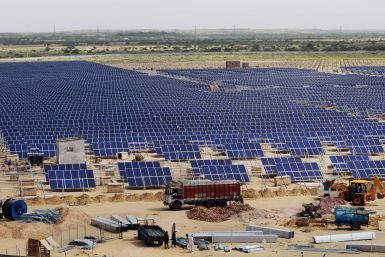Renewable energy sources provided power for more than half of Great Britain on Wednesday, far more energy than coal or gas.
Deepwater Wind just helped Block Island residents turn off their diesel generators for good.
President Donald Trump has strongly spoken against wind power, but the industry is rapidly creating jobs, especially in states that voted for him.
The western swordfern may be the best model for solar storage.
Anheuser-Busch InBev pledged that Budweiser, Corona, Stella Artois and its other beverages would be exclusively produced with renewable energy by 2025.
Google mapped homes across the country to see if they could be solar homes.
If the project is successful, the island would provide power to an estimated 80 million homes.
Senator Sanders and Bill Nye the Science Guy sat down to talk climate change on Facebook Live Monday morning.
The association is also backed by Johnson Controls, Schneider Electric, GE, AES, SunPower and First Solar.
For the first time ever, solar energy additions were the largest source of new U.S. electric capacity, the Solar Energy Industries Association said.
A report released by the nonprofit Bank Information Center asserts that the World Bank's policies were responsible for turning Mozambique and Indonesia into major coal exporters.
Apple has been found to have the lowest carbon footprint among large tech companies, the third year in a row.
In over 30 countries, electricity produced through solar and wind energy is the same price or cheaper than any new fossil fuel capacity, the World Economic Forum said in a new report.
The world’s first solar road was revealed in Normandy, France.
Actor Leonardo DiCaprio said renewable energy technology provides the U.S. with a major opportunity.
The carbon costs to create solar panels has been made up for in clean energy, study finds.
The International Energy Agency, which made the observation in a new report, also significantly hiked its growth forecast for renewables over the next five years.
Spain is the fifth-largest producer in the world of wind power and the third-biggest exporter.
If global aviation were a country, it would rank as the seventh largest carbon emitter in the world.
A team of researchers at the University of Arizona in Tucson found that trees may do more harm than good in fighting climate change.
Liquefied natural gas, coal plants and nuclear power account for most of South Korea’s current energy production.
The South Asian country, the world’s second-most populous, is targeting 100GW of solar energy generation by 2022, up from the current 7GW.










































